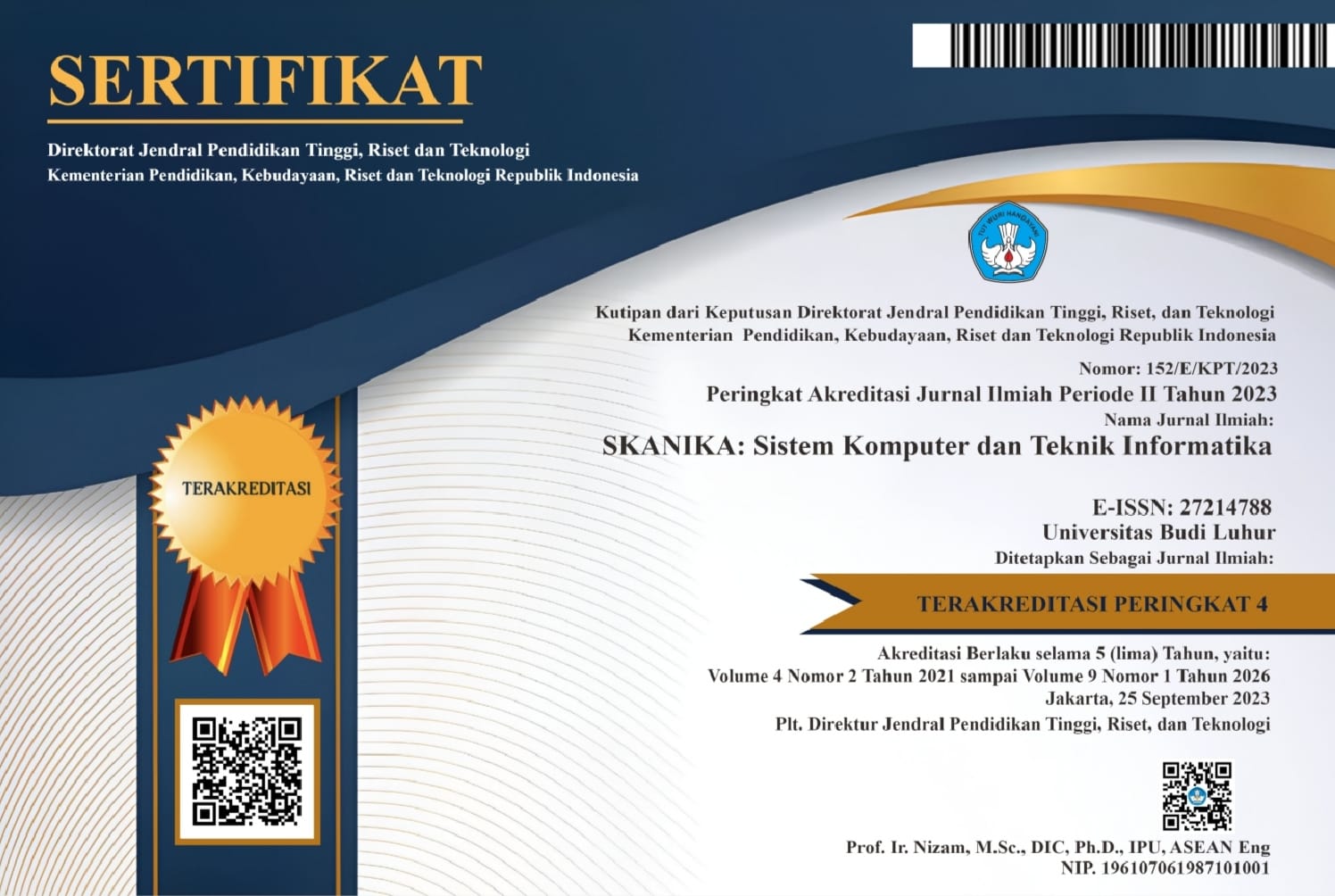KLASIFIKASI TEKS ULASAN APLIKASI NETFLIX PADA GOOGLE PLAY STORE MENGGUNAKAN ALGORITMA NAÏVE BAYES DAN SVM
Abstract
Netflix is a subscription streaming platform that presents various shows, such as TV series, documentaries, and films, connected to a device connected to the internet. One of the most popular sites for streaming videos is Netflix, throughout the world and is now starting to apply data analysis and machine learning technology to improve its user services. Through the Google Play Store, users can submit various reviews about the Netflix application. It is possible to extract significant hidden information from this vast quantity of review data that is helpful for assessing an application's quality. Therefore this research aims to classify text reviews of the Netflix application by comparing the two algorithms applied, that is, Support Vector Machine (SVM) and Naive Bayes. With the aim of finding out which algorithm performs better in terms of accuracy. The dataset was obtained through the Google Play Store and applied to the scraping method, totaling 1000 reviews, and processed utilizing the Python programming language. Then the Netflix application review data that was obtained was divided into 70% train data and 30% test data. 82% of the accuracy results were obtained using the Naive Bayes approach., while the support vector machine (SVM) yielded 85% accuracy. It therefore demonstrates that support vector machines (SVM) are no more successful than the outcomes of applying the Naive Bayes method. (SVM).
Downloads
References
[2] S. A. Aaputra, et al, “Sentiment Analysis Analysis of E-Wallet Sentiments on Google Play Using the Naive Bayes Algorithm Based on Particle Swarm Optimization,” Jurnal RESTI (Rekayasa Sistem dan Teknologi Informasi), vol. 3, no. 3, pp. 377–382, 2019.
[3] R. A. Subagja, Y. Widiastiwi, and N. Chamidah, “Klasifikasi Ulasan Aplikasi Jenius pada Google Play Store Menggunakan Algoritma Naive Bayes,” Informatik Jurnal Ilmu Komputer, vol. 17, no. 3, p. 197, 2021.
[4] I. S. Milal, et al., “Klasifikasi Teks Review Pada E-Commerce Tokopedia Menggunakan Algoritma Svm,” Naratif Jurnal Nasional Riset Aplikasi dan Teknik Informatika, vol. 5, no. 1, pp. 34–45, 2023..
[5] R. Wahyudi and G. Kusumawardana, “Analisis Sentimen pada Aplikasi Grab di Google Play Store Menggunakan Support Vector Machine,” Jurnal Informatika., vol. 8, no. 2, pp. 200–207, 2021.
[6] L. Mutawalli, M. T. A. Zaen, and W. Bagye, “Klasifikasi Teks Sosial Media Twitter Menggunakan Support Vector Machine (Studi Kasus Penusukan Wiranto),” Jurnal Informatika dan Rekayasa Elektronika, vol. 2, no. 2, p. 43, 2019.
[7] M. I. Fikri, T. S. Sabrila, and Y. Azhar, “Perbandingan Metode Naive Bayes dan Support Vector Machine pada Analisis Sentimen Twitter,” Smatika Jurnal, vol. 10, no. 02, pp. 71–76, 2020.
[8] F. Nurwanda, J. R. Rizkiani “Perbandingan Metode Naive Bayes Classifier dan Support Vector Machine pada Analisis Sentimen Twitter Topik Lifestyle,” Jurnal Ilmiah Wahana Pendidikan, vol. 9, no. 21, pp. 314–323, 2023.
[9] U. Riyanto, “Analisis Perbandingan Algoritma Naive Bayes Dan Support Vector Machine Dalam Mengklasifikasikan Jumlah Pembaca Artikel Online,” JIKA (Jurnal Informatika), vol. 2, no. 2, pp. 62–72, 2018.
[10] A. J. Firdausi, W. Astuti, Adiwijaya“Perbandingan Algoritma Klasifikasi SVM dan Naive Bayes Dalam Analisis Sentimen Pembelajaran Daring di Masa Pandemi COVID-19 di Twitter,” e-Proceedings of Engineering, vol. 9, no. 3, pp. 2065–2083, 2022.
[11] Y. Pratiwi, A. Yaqin, S. Informasi, F. I. Komputer, F. I. Komputer, and N. B. Classifier, “Klasifikasi Tweet Tidak Senonoh Twitter dengan Naive Bayes Classifier,” e-Jurnal JUSITI (Jurnal Sistem Informasi dan Teknologi Informasi), vol. 11, no. 01, pp. 70–80, 2022.
[12] A. C. Saputra and A. S. Saragih, “Klasifikasi Rating Aplikasi Android Di Google Play Store Menggunakan Algoritma Gradient Boost,”Jurnal Teknika (Jurnal Teoritis dan Terapan Bidang Keteknikan), vol. 6, no. 1, pp. 18–29, 2022.












